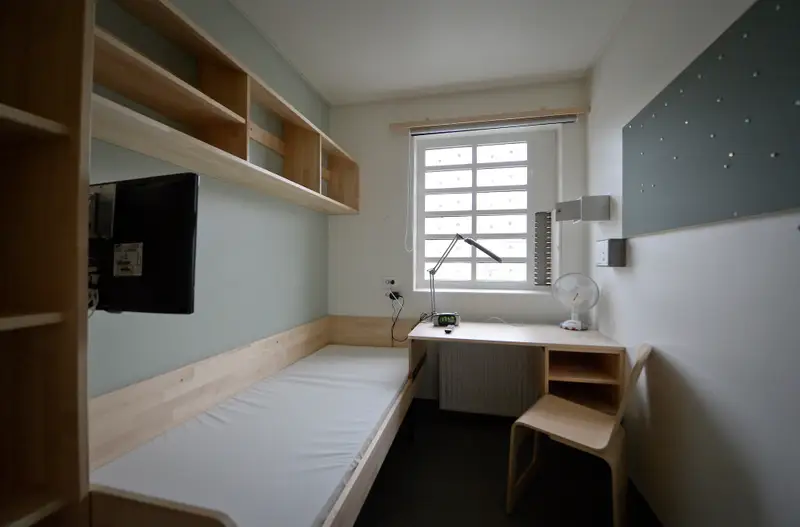The Swedish Prison System
A Swedish prison cell.
December 18, 2020
“Our role is not to punish. The punishment is the prison sentence: they have been deprived of their freedom. The punishment is that they are with us,” says Nils Öberg, director-general of Sweden’s prison and probation service.
Prisons in Sweden are rehabilitative, and designed to treat prisoners as people with psychological needs that need to be taken care of. Prison workers aren’t just there to guard the prison, they are there to fill the roll of an enforcer and a social worker. They balance behavioral regulation while preparing the inmates for re-entering society, according to Mic.
Prisoners in “open prisons” do not spend their time behind bars; rather, they live in housing that resembles dorms from a school, and have more freedom than what most people would usually imagine. Prisoners have access to televisions and are even able to visit their families while being monitored. Mic states, “Prisoners and staff eat together in the community spaces built throughout the prison. None are expected to wear uniforms.” This ties back to treating the prisoners as people with psychological needs. Eating with them will make them feel human.
This system obviously works because according to the Guardian, Swedish prisoner numbers have dropped from 5,722 to 4,500 and last year four prisons were closed because of disuse. Swedish prisons focus on the rehabilitation of prisoners, to limit re-offenders. Sweden has the smallest number of re-offenders in all of Europe, just 16%.
This is in contrast to American’s punitive prison system which is overcrowded and has many mentally-ill prisoners locked up. Nearly two thirds of the released prisoners re-offend and come back to prison. The philosophy behind the Swedish prison system is a positive one, which has resulted in reforming prisoners into good citizens rather than punish them which leads to them re-offending.










James May • Dec 28, 2023 at 8:20 am
Amazing stuff, the American prison system is so bad that 2/3 go back just 3 years after being released. That has to do with the d-humanizing of its people. They are right about mentally ill people also, while i was locked in a florida prison I was with people who where VERY mentally ill. No idea why they where housed with us. Also we have mandatory time, so having good behavior doesn’t benefit you at all, no gain time, no incentives. Nothing at all, so why not become worse? Not to mention the day of your release you have 0 dollars and one buss ticket. Take all this into account and you have someone who has no money, no skills and put at a disadvantage for being a felon.
Drey • Mar 2, 2024 at 4:58 pm
Maybe don’t commit a crime and stay in the freeworld, get a job and work like regular people…
Sora • Mar 17, 2024 at 7:10 am
@Drey, Everyone does stupid things, and we don’t know what James did or why he did it or even if he did it. What matters is that he is working to be better, and we should respect that. And it’s hard to get a job when 1. you are a felon, 2. you don’t look presentable, and 3. you don’t have money to make yourself look presentable. don’t just judge people when you don’t know the full story.
@James May, congrats on getting out. I hope you are doing well
Matt Nödwick • May 12, 2023 at 10:40 am
It work, no?
Lee • Jul 6, 2022 at 7:42 pm
Even for people who murder? Wow
william • Oct 16, 2023 at 9:55 am
they usually get the death sentence
James • Nov 2, 2023 at 5:07 pm
Actually no, Sweden outlawed the death sentence in 1973, and the last time capital punishment was used was back in 1910.
Jackie Bowley • Mar 18, 2022 at 9:28 pm
Love it and prisons all over the world should take note. This concept would definitely keep violence minimal or even non-existent. I guess the majority of prisons like violent outbursts and wardens being assaulted, injured or killed. At the end of the day it’s up to those in authority wanting a positive change to a very negative lifestyle. The Swedish Prison System should be standardized all over the World.
Butch Belgica • Jan 18, 2022 at 5:20 am
It’s like a vacation apartment
James Golder • Feb 5, 2022 at 4:22 pm
better then being locked in a cell and treated like trash though